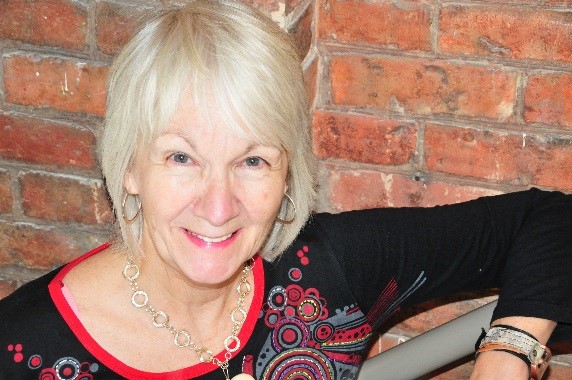National Housing Day Canada 2017- What About Women And Girls?

Susan Macphail
Susan Macphail is Director of Community and Women’s Programs & My Sisters’ Place for Canadian Mental Health Association Middlesex. Involved in social activism, innovative initiatives and activism for over forty years, she remains active at local, provincial and national levels focusing on the intersectionality of the impact of interpersonal violence, gender, trauma, mental health, addictions, poverty and homelessness.
“Across the world, the most dangerous place for a woman to be is in her own home” - Jennifer deGroot from “peace….women imagine a peaceful world”.
The World Health Organization reports that a third of women worldwide in intimate relationships will experience violence at the hands of their partners. Globally, about 38% of all women murdered die at the hands of their intimate partners. And, recent evidence shows that even in conflict-affected countries where there are high rates of sexual violence perpetuated against women by soldiers and rebel forces, women are still at most risk of violence at the hands of their intimate male partners.
The Canadian Observatory on Homelessness identifies that 27.3% of total homelessness populations are women but these statistics do not include the over 100,000 women and children who flee their homes due to violence every year. It has been estimated that if those women and children were included in the total, that the percentage could be 50% or more.
In London, Ontario, a collaborative of three lead agencies with a combined wealth of experience supporting women as well as ten women with lived experience, set out to understand how to connect the dots. They’re looking information about the link between women’s experiences of homelessness, their experiences of intimate partner violence and the systemic violence they also frequently reported from the various systems and services they sought help from or interacted with. This project, known as “Homes for Women London” (H4WL) grew out of the first grass roots national conferences on women’s homelessness held in London in 2011 and 2014. The conferences were known as "All Our Sisters" after the book by the same name by author Susan Scott who interviewed 60 women across Canada giving voices and faces to women’s experiences of homelessness and precarious housing, which is often invisible and in the shadows. The “All Our Sisters’ “conferences brought hundreds of women from every province and territory together to “focus on safe sustainable housing and communities for women from coast to coast to coast”.”Participation included women with lived experience, activists, service providers, decision and policy makers, and academics. It was through these conferences that a need was identified for Housing First programs for women delivered through an explicitly feminist lens, particularly taking into account women’s experiences of violence. YMCA Canada developed a brief after the first conference identifying concerns with the current body of evidence on Housing First (YMCA Canada, 2013) called "Homes 4 Women", the name of which was then adopted for the London project H4WL.
H4WL asserts that the experience of homelessness is very much a gendered experience; for women and girls, violence and trauma are overarching themes. These themes are common in experiences precipitating homelessness, during episodes of homelessness (Browne & Bassuk, 1997; Whitzman, 2006), and serving as barriers to exiting homelessness. In Canada, there is an established homeless serving system, with emergency services and supports (e.g., shelters) to mitigate homelessness, however, the focus of this approach is on those who are chronically homeless, not women specifically. These responses may not address the gendered experiences of homelessness, and additionally do not focus on intervention or prevention (Temberis, 2010). This is congruent with qualitative research on homelessness that points to concerns of those with lived experience that, in spite of current supports, housing feels largely unattainable in the Canadian context (Morrell-Bellai, Goering, & Katherine, 2000).
At a time when the homeless serving sector focuses on Housing First as the key to ending homelessness, women are obligated to fit into a program which has been designed around men. Housing First centers it’s focus on the scattered site model, although Housing First philosophy outlines congregate and transitional housing may be necessary for some, the scattered site model is the foundation of the philosophy. H4WL found that forcing women into this model of housing was isolating and dangerous, even with daily check ins by workers the dangers to women were evident with frequent calls to police from nieghbours regarding domestic violence and reported sexual assaults in their homes.
Housing First, as both a philosophy and a program implementation of this philosophy, has demonstrated promise when homeless people are rapidly re-housed provided the housing is (a) affordable, (b) safe, (c) supported, and (d) permanent (Gaetz, 2013).
However, Housing First is largely focused on the stereotypical homeless individual, namely white, middle-aged men, with concurrent substance involvement and mental health challenges (YWCA Canada, 2013). As the experience of homelessness is gendered, so too should be the responses to homelessness. Although gender should be an important consideration in all health and social services delivery, Housing First projects have generally included women but not necessarily provided training for staff to address the unique needs of women and girls, nor conducted evaluations that consider differential, gendered experiences. This is not to say that these programs are not serving women, and having positive outcomes with some women, but rather that opportunities exist to enhance models that might better integrate gender-based “best practices”. While participation in existing Housing First programs has included women and girls, published evaluations of such programs are still quite limited (Oudshoorn & Forchuck et al. 2017).
H4WL sought to identify how Housing First could be adapted to better address the intersections of women’s and girl’s experiences of homelessness and violence. A systems level gendered, relational- cultural and trauma and violence informed framework is essential in creating responses that ensure that policies, practices and programs ensure safe communities and homes for women and girls from coast to coast to coast.
